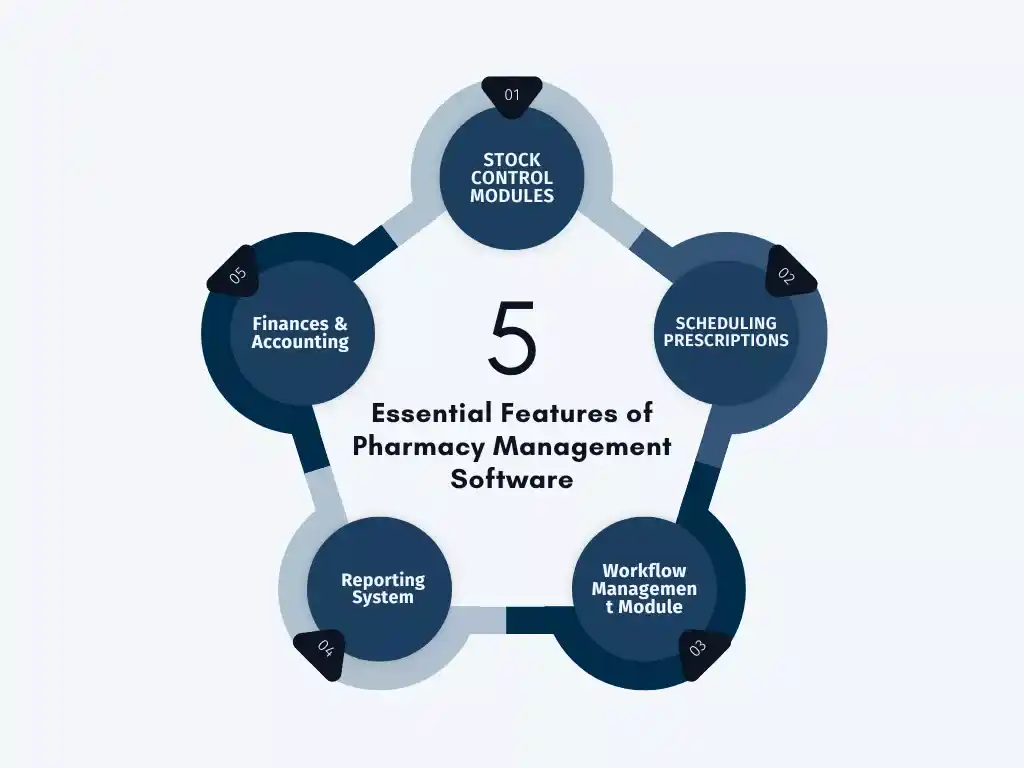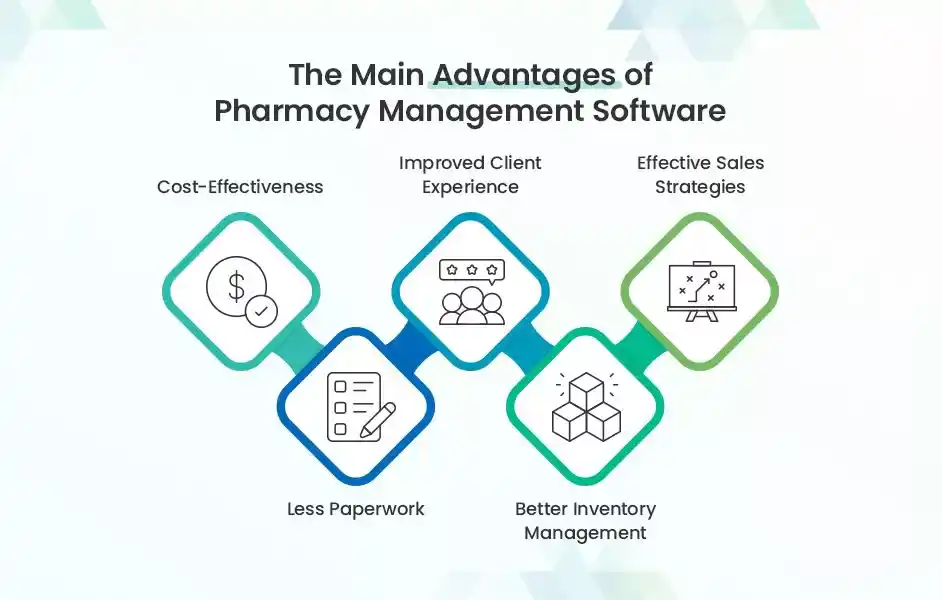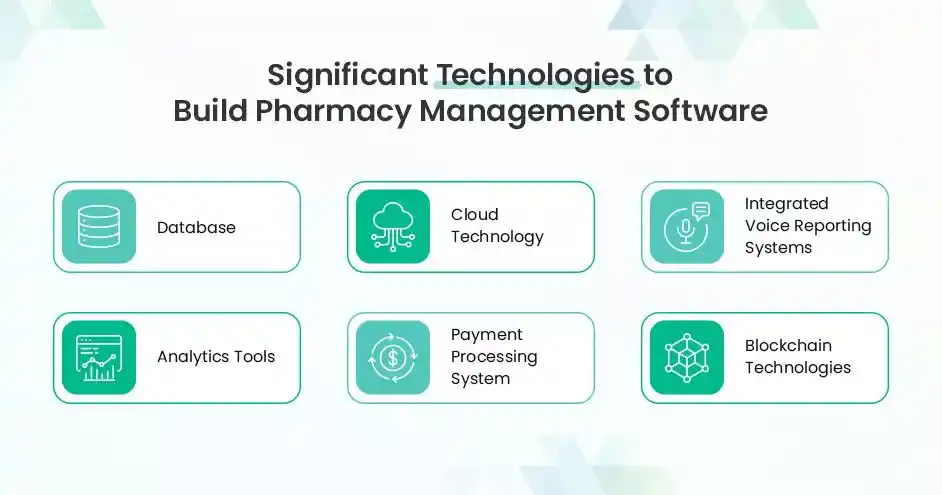Table of Contents
Pharmacy Management Software is a digital tool that streamlines pharmacy operations. It automates daily tasks like managing prescriptions, inventory, and sales. This system enhances efficiency by handling repetitive tasks accurately and reliably, akin to having an extra set of hands that never tire or err.
By implementing a Pharmacy Management System, pharmacies can ensure smoother operations, reduce errors, and improve overall service quality.
Why is Pharmacy Management Software Important?
Pharmacy management is complex, juggling medication dispensing, compliance, and customer satisfaction. Enter Pharmacy Management Software – the ultimate solution. With powerful reporting, it handles tasks efficiently and offers crucial business insights, streamlining operations for pharmacists to prioritize healthcare provision.
Automation slashes errors, boosts workflow, and strengthens inventory management. It tracks prescriptions meticulously, ensuring regulatory adherence. In sum, Pharmacy Management Software empowers pharmacies to deliver top-notch care, a vital asset in today’s demanding healthcare landscape.
Essential Features of Pharmacy Management Software

The essential features of an ideal Pharmacy Management Software must include:
- Stock Control Modules: This feature allows you to monitor each product’s warehouse stock in real-time, alerting you when supplies are low to prevent critical item shortages and overstocking.
- Scheduling Prescriptions: Good Pharmacy Management Software automatically sets prescription schedules, enhancing customer satisfaction by ensuring they never run out of necessary medications.
- Workflow Management Module: By managing orders from entry to dispensing, this module eliminates operational breaks and prevents errors or delays, ensuring everyone knows what needs attention next.
- Reporting System: This tool helps prepare insightful reports on sales, stock levels, and profitability, providing performance indicators that support strategic business decisions.
- Finances & Accounting: Modern Pharmacy Management Software includes integrated accounting features, simplifying customer billing and expense management without the need for separate software.
Benefits of Pharmacy Management Software

Here are the primary advantages of Pharmacy Management Software that can seal in:
- Cost-Effectiveness: Pharmacy Management Software can be a game-changer in reducing operational costs. By automating tasks such as data entry, inventory tracking, and report generation, this tool saves both time and money that would otherwise be spent on manual processes.
- Less Paperwork: Nobody wants to be overwhelmed with paperwork, especially in the age of digital transformation in healthcare. Pharmacy Management Software reduces clutter, minimizes errors, and provides faster access to desired data by automating transactions and prescriptions.
- Improved Client Experience: Pharmacy Management Software enhances the client experience by offering fast prescription processing, personalized service based on purchase history, and easy refill options, ensuring your customers’ seamless and satisfying visits.
- Better Inventory Management: With real-time inventory management, Pharmacy Management Software ensures you never run short of essential items or keep excess stock. It tracks product levels accurately, helping maintain an optimal balance and efficiently managing capital resources.
- Effective Sales Strategies: Pharmacy Management Software generates detailed sales reports, allowing you to identify best-selling products and design more effective marketing strategies. This increases profitability while providing better customer service than ever.
Technologies Needed to Create the Software

The following are significant technologies required to build effective Pharmacy Management Software:
- Database: A comprehensive pharmacy database management system is essential for handling patient information, prescription records, inventory data, and transaction history, forming the backbone of pharmacy management software.
- Cloud Technology: Cloud technology enables pharmacies to access their systems from anywhere, scaling according to business growth. It also offers encryption and backups for data security, reducing the need for traditional hardware setups.
- Integrated Voice Reporting Systems: An IVR system can automate activities like refilling prescriptions and confirming orders through voice calls, enhancing customer service efficiency by freeing staff from repetitive tasks.
- Analytics Tools: Analytics tools provide insights into sales trends, top-selling products, and other performance metrics, allowing decision-makers to make informed choices to boost profitability and client satisfaction.
- Payment Processing System: Integrate a secure and reliable payment processing solution to facilitate seamless checkouts for online and offline transactions, catering to the growing preference for cashless payments.
- Blockchain Technologies: Blockchain technology ensures the integrity and security of the pharmaceutical supply chain, from manufacturing to the end consumer, helping to combat counterfeit medication issues and maintain drug authenticity.
Related Article:
The Best Guide To High-Tech Healthcare Software Development
Steps to Develop a Pharmacy Management System
Developing Pharmacy Management Software involves several crucial steps:
- Define Requirements: Consult stakeholders to identify key features like inventory management and reporting.
- Ensure Compliance: Adhere to healthcare regulations like HIPAA for patient privacy and data security.
- Design UX/UI: Create an intuitive interface with features such as barcode scanning for smooth navigation.
- Database Design: Establish a robust database structure for effective data storage and scalability.
- Integrate External Systems: Enable seamless data interchange with insurance and EHR systems through APIs.
- Prescription Processing: Develop a module for accurate prescription entry, validation, and dispensing.
- Inventory Management: Implement systems for tracking stock levels, expiration dates, and reorder alerts.
- Patient Management: Create modules for patient profiles, medication history, and personalized counseling.
- Reporting and Analytics: Incorporate tools for insights into pharmacy performance and trends.
- Testing and QA: Conduct rigorous testing for functionality, security, and user acceptance.
- Deployment and Training: Plan phased deployment and provide comprehensive staff training.
- Maintenance: Regularly update the software to address security threats and regulatory changes.
Streamline Pharmacy Operations with Advanced Software
Incorporating the essential elements into a pharmacy management software strategy is the key to unlocking success in prescription management.
By defining requirements, ensuring compliance, designing a user-friendly interface, implementing robust database structures, and integrating external systems seamlessly, pharmacies can streamline operations, enhance efficiency, and ultimately improve patient care.
With the right software solution in place, a pharmacy can thrive in today’s fast-paced healthcare environment, providing optimal service while maintaining regulatory compliance and ensuring patient safety.